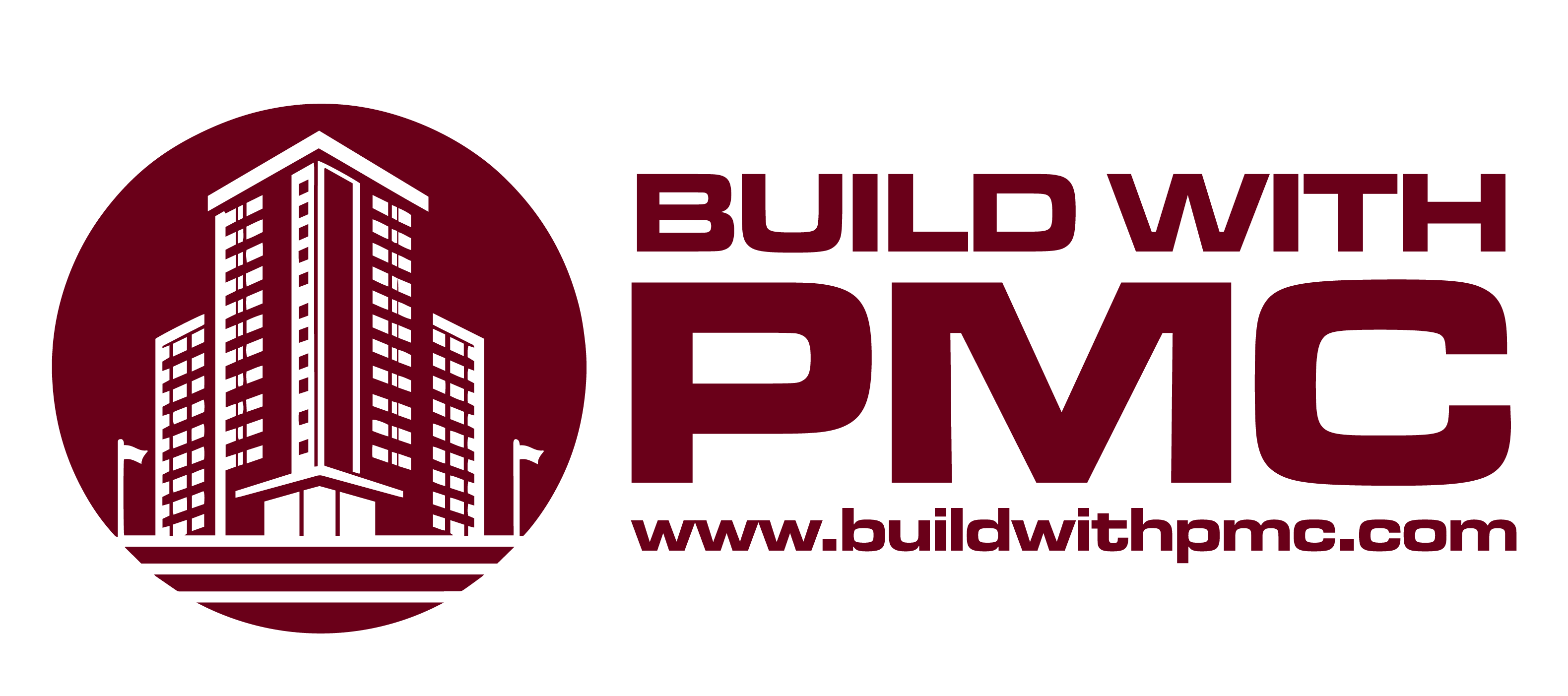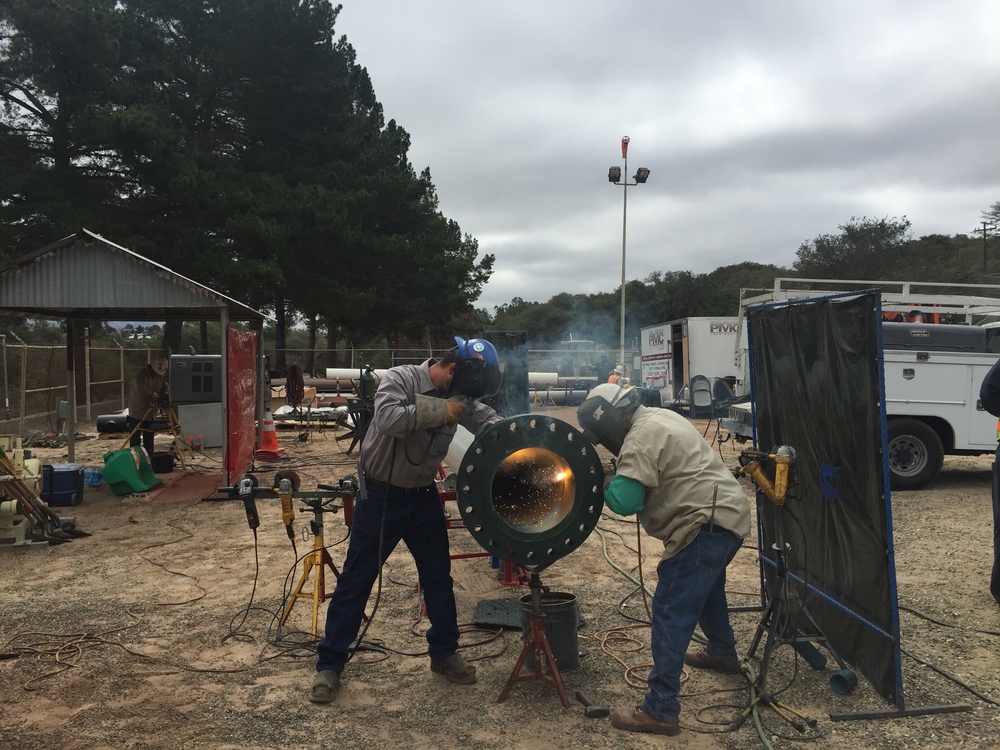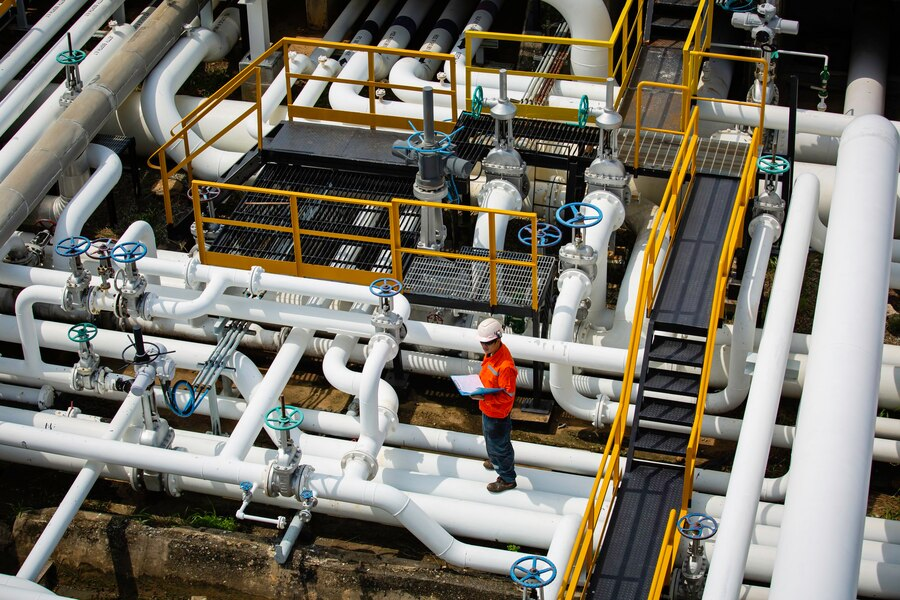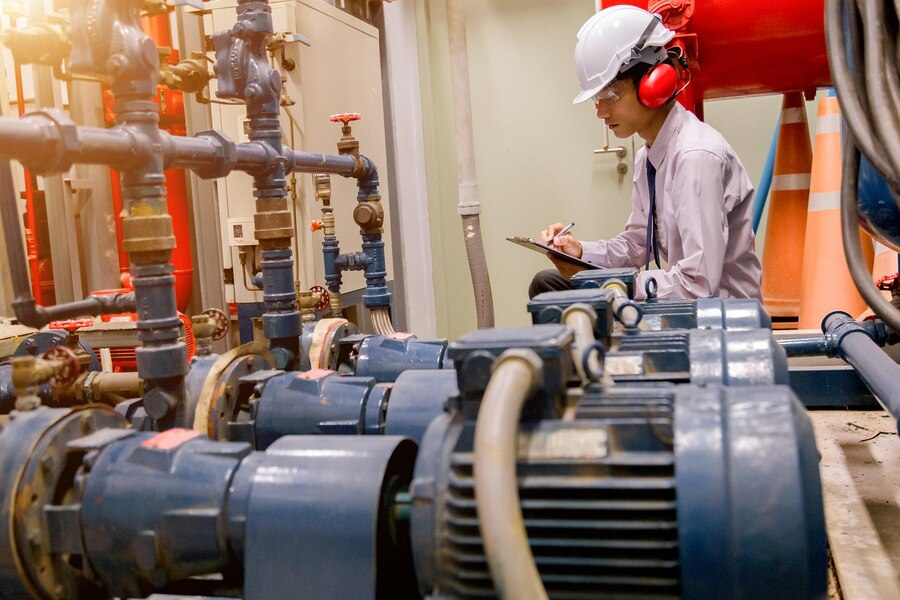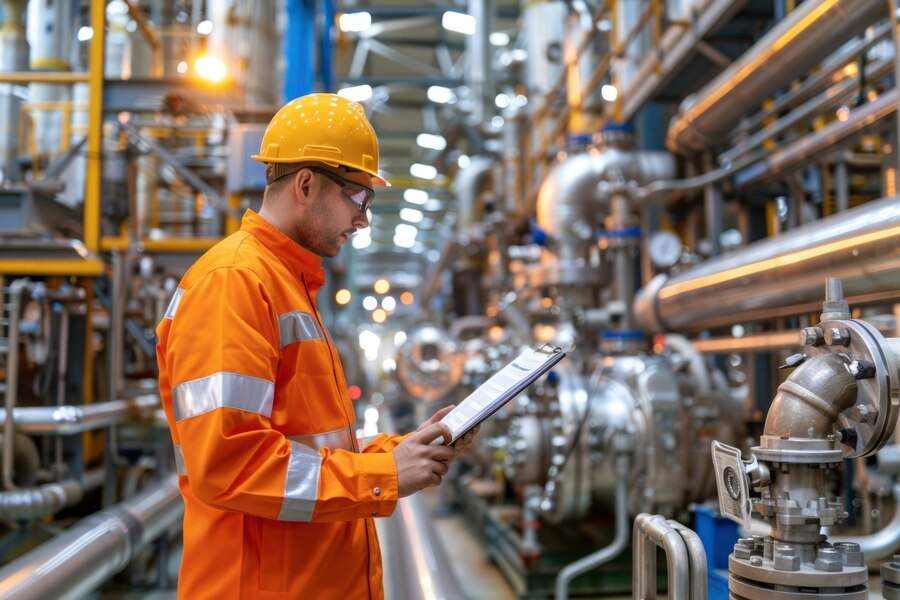Embarking on the journey to master process piping can be daunting without the right guidance. That’s where PMC INC steps in, offering a comprehensive guide tailored to professionals and enthusiasts alike. In this intricate world where precision and efficiency reign supreme, understanding the nuances of process piping is paramount. From design principles to material selection, installation techniques to maintenance strategies, this guide leaves no pipe unturned. Whether you’re a seasoned engineer seeking to refine your skills or a novice eager to delve into the intricacies, our guide equips you with the knowledge needed to navigate the labyrinth of process piping with confidence.
Understanding Process Piping, Foundations and Fundamentals

Process piping serves as the circulatory system of industrial facilities, transporting fluids, gases, and other materials essential for various processes. This intricate network of pipes is crucial across industries such as petrochemicals, pharmaceuticals, food and beverage, energy generation, and many others. Understanding the basics of process piping is paramount for engineers, designers, and operators involved in the planning, construction, and maintenance of industrial infrastructure.
Definition and Importance
Process piping refers to a system of interconnected pipes used to convey fluids or gases within an industrial facility. These fluids may include water, chemicals, fuels, steam, or gases essential for manufacturing, heating, cooling, or other industrial processes. Unlike plumbing systems in residential or commercial buildings, process piping is designed to withstand higher pressures, temperatures, and corrosive environments characteristic of industrial operations.
The significance of process piping lies in its role as a critical infrastructure component across various industries. Efficient and reliable piping systems are essential for maintaining process integrity, ensuring safety, and optimizing production output. Any malfunction or failure in process piping can lead to costly downtime, environmental hazards, or even catastrophic accidents. Thus, a thorough understanding of process piping fundamentals is essential for designing robust, efficient, and safe industrial systems.
Fundamental Components
Process piping systems comprise several fundamental components, each serving a specific purpose:
- Pipes: The primary conduit for fluid or gas transport, pipes come in various materials, sizes, and configurations depending on the application and operating conditions. Common materials include steel, stainless steel, carbon steel, copper, and plastics such as PVC or CPVC.
- Fittings: Fittings are used to connect pipes, change direction, or adapt to different pipe sizes. Examples include elbows, tees, reducers, couplings, and flanges. Proper selection of fittings is crucial for ensuring structural integrity and fluid flow efficiency.
- Valves: Valves control the flow of fluids within the piping system. They can open, close, or regulate flow rates to maintain process parameters within desired ranges. Valve types include gate valves, globe valves, ball valves, butterfly valves, and check valves, each suited for specific applications.
- Supports and Hangers: Supports and hangers provide structural support to the piping system, preventing sagging, vibration, or excessive stress. Proper spacing and installation of supports are critical for maintaining system integrity and preventing damage or leaks.
- Insulation: Insulation is applied to piping systems to conserve energy, prevent heat loss or gain, and protect personnel from hot surfaces. Insulation materials may include fiberglass, foam, chosen based on temperature requirements and environmental conditions.
Materials and Design Considerations
Selecting appropriate materials and considering design factors are vital aspects of process piping engineering.
Factors to consider include:
- Material Compatibility: The selected materials must be compatible with the fluid being transported to prevent corrosion, contamination, or degradation of the piping system.
- Pressure and Temperature Ratings: Piping materials and components must withstand the pressure and temperature conditions encountered during operation. Proper selection ensures safety and reliability.
- Environmental Factors: External factors such as weather conditions, exposure to chemicals, or seismic activity may influence material selection, insulation requirements, and installation methods.
- Regulatory Compliance: Compliance with industry standards, codes, and regulations is essential to ensure the safety and integrity of process piping systems. Adherence to standards such as ASME B31.3, ASTM, ANSI, and API ensures quality and reliability.
Understanding the foundations and fundamentals of process piping is essential for engineers and professionals involved in industrial operations. By grasping the basic principles, components, materials, and design considerations, stakeholders can contribute to the development of robust, efficient, and safe piping systems critical for various industrial processes.
Maximizing Efficiency in Process Piping Systems, Strategies and Best Practices

Understanding System Requirements:
Before diving into design, it’s crucial to thoroughly understand the requirements of the process piping system. This involves assessing factors such as fluid type, flow rates, pressure, temperature, and material compatibility.
Conceptualization and Feasibility Studies:
During the conceptualization phase, PMC INC engineers brainstorm various design alternatives based on the gathered requirements. They evaluate different layouts, material options, and routing possibilities to determine the most feasible and efficient approach. Feasibility studies are conducted to assess the technical, economic, and environmental viability of each design option.
Engineering Design:
Once the optimal design concept is selected, PMC INC engineers proceed to the detailed engineering phase. This involves creating precise drawings, specifications, and calculations to translate the conceptual design into a tangible plan.
Engineering design also encompasses selecting appropriate piping materials, fittings, supports, and insulation to ensure longevity, reliability, and efficiency.
Integration of Smart Technologies:
PMC INC stays at the forefront of technological advancements, integrating smart sensors, actuators, and control systems into their piping designs. These technologies enable real-time monitoring, predictive maintenance, and optimization of system performance.
IoT (Internet of Things) devices are strategically deployed throughout the piping network to collect data on flow rates, pressure levels, temperature variations, and other parameters.
Emphasis on Safety and Regulatory Compliance:
Safety is paramount in process piping design. PMC INC adheres to stringent safety standards and codes, ensuring that their systems are designed to mitigate risks of leaks, ruptures, or other hazardous incidents. Compliance with industry regulations and environmental guidelines is closely monitored throughout the design process.
Continuous Improvement and Optimization:
The design process doesn’t end with construction. PMC INC is committed to ongoing optimization and improvement of their piping systems throughout their lifecycle. Performance metrics are continuously monitored, and feedback from operators and maintenance personnel is solicited to identify areas for enhancement.
Material Selection for Process Piping, Making the Right Choices

In the realm of process piping, where functionality, longevity, and safety are paramount, the selection of materials holds utmost significance. This critical aspect involves a meticulous assessment of various factors to ensure optimal performance and reliability. Understanding the complexities of material selection is pivotal in avoiding costly errors, mitigating risks, and enhancing overall operational efficiency.
Factors Influencing Material Choice:
- Compatibility: Compatibility between the material and the transported fluid is essential to prevent chemical reactions, contamination, and degradation. Understanding the chemical properties of both the fluid and the material is crucial in ensuring compatibility and long-term integrity.
- Corrosion Resistance: Corrosion is one of the primary concerns in process piping systems, as it can lead to structural deterioration, leaks, and ultimately, system failure. Selecting materials with superior corrosion resistance, either through inherent properties or protective coatings, is imperative in maintaining the integrity of the piping infrastructure.
- Mechanical Properties: Mechanical strength, ductility, and toughness are vital considerations, especially in applications subject to high pressure, temperature fluctuations, or mechanical stress. The selected material must possess the necessary mechanical properties to withstand operational demands and environmental factors without compromising performance or safety.
- PMC INC’s Approach to Material Selection: PMC INC employs a systematic approach to material selection, leveraging expertise, industry standards, and advanced technologies to identify the most suitable materials for each application.
- Thorough Assessment: PMC INC conducts a thorough assessment of project requirements, considering factors such as fluid composition, operating conditions, regulatory standards, and project-specific constraints.
- Material Testing and Analysis: Utilizing state-of-the-art testing facilities and analytical techniques, PMC INC evaluates candidate materials for chemical compatibility, corrosion resistance, mechanical properties, and other critical parameters.
- Risk Analysis: PMC INC conducts risk analysis to identify potential failure modes, mitigate risks, and optimize material selection to enhance reliability and safety throughout the project lifecycle.
- Collaboration and Expertise: PMC INC collaborates closely with clients, suppliers, and industry experts to leverage collective knowledge and experience in selecting materials that meet performance objectives while adhering to budgetary constraints and project timelines.
Material selection for process piping is a multifaceted endeavor that requires careful consideration of various factors, including compatibility, corrosion resistance, and mechanical properties. By adopting a systematic approach and leveraging expertise, organizations like PMC INC can make informed decisions that optimize performance, mitigate risks, and enhance the overall integrity of process piping systems.
